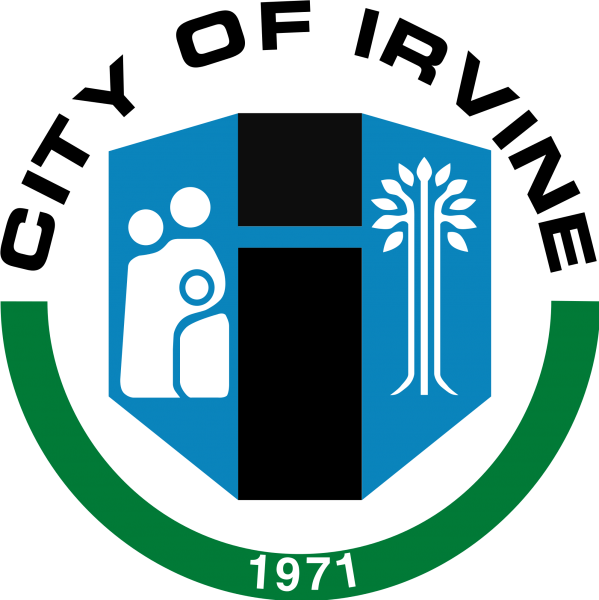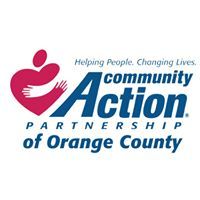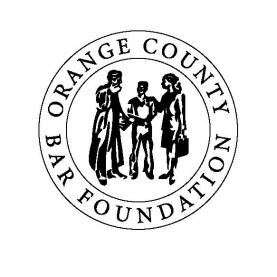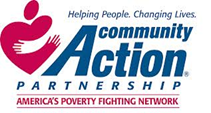Advanced Field Study Projects 2018-2019
| Student Name | Project Title and Organization |
| Tran Hoang |
Effects of Lack of Affordable Housing on College Students - Project Hope Alliance |
|
Even in a college setting, students can face housing insecurity and homelessness. There is a need for this study, but we know little about housing insecurity on college campuses and how students respond to it. In past reports from Project Hope Alliance, we discovered how older students have experienced housing insecurity are often “on their own” and support provided at school is not enough. In the Promotor Pathway Program, we have five currently in college and eleven planning to attend in the fall. At Project Hope Alliance, past outcomes included reduced risky behaviors, improved grades, attendance, behaviors, and engagement—and a start on the path to college or career. With the current research, we hope to learn more about the challenges that students with housing insecurity face. The subject population is college students and recent high school graduates receiving assistance from the Promotor Pathway Program under Project Hope Alliance. This subject population has experienced or are still currently experiencing housing insecurity in Orange County. We are conducting 15-minute interviews with students facing housing insecurity. We are anticipating interviewing nine students about their experience with housing insecurity. Findings from these interviews reveal how housing insecurity has affected students’ perception of their future educational and career goals, main priorities, and thoughts on housing in Orange County. |
|
Advanced Field Study Projects 2017-2018
|
Student Name |
Project Title and Organization |
|
Judy Baladi |
How Being Housed Affects Children's Academic Performance - Project Hope Alliance |
|
Project Hope Alliance is a rapid-rehousing program serving all of Orange County that provides assistance to homeless families through its many programs. Project Hope Alliance’s goal is to end the cycle of homelessness, one child at a time. Education and homelessness are strongly linked. The long-term solution to ending homelessness involves providing children with the proper educational tools to be able to access opportunities which will allow them to combat homelessness. This program provides children with online curricula, Wi-Fi jetpacks, tutors, and laptops. The online programs focus on math and literacy activities and provide access to online live instructors. In order to better understand the program being used at Project Hope Alliance and how it affects children’s educational success, it is the objective of this project to assess children’s academic performance in school before and after being housed and how their commitment to and usage of Project Hope Alliance’s educational program has affected their academic performance. I will collect data assessing report cards before and after being housed in order to measure academic performance. I will monitor program usage in children who are housed versus children who are homeless to discover which students are more likely to use the program. I will explore whether children who used the program more frequently experienced greater progress in academic performance than those who did not use the program consistently. Finally, I will compare the impact of rehousing on academic performance of each student over time to monitor any individual changes. |
|
|
Hye Yun Lee |
Domestic Violence: Emergency Shelter Demographics - Human Options |
|
Domestic violence results from the use of abusive behaviors of one intimate partner against another in a systematic pattern of power and control over the victim. The current body of literature identifies various individual, relational, community, and societal factors as risk factors for intimate partner violence. The goal of this study was to examine the demographics of an emergency shelter’s population and compare these findings with the national and state-wide demographics of domestic violence. Through this comparison, the study sought to determine whether there was any compelling evidence that socioeconomic or cultural factors may have a correlation with help-seeking behavior. It is expected that the results will be consistent with the current literature on domestic violence and find that the sample population of those who seek the services of the emergency shelter generally reflect the national and state-wide demographics of the incidence of domestic violence, indicating similar risk factors. The findings of this study may not be easily generalizable because not all victims of DV seek services from emergency shelters. However, by identifying the risk factors and corresponding help-seeking behavior, this study may lend some insight and help improve outreach strategies to be more effective and inclusive of victims of DV who may need the resources offered by the emergency shelter yet are not aware of or do not seek these services available to them. |
|
|
Brianda Ruiz Chavez |
SHORTSTOP Juvenile Crime Diversion Program - OC Bar Foundation |
|
Juvenile Diversion Programs have been used widely in the United States as a means to deter at-risk youth from entering the juvenile criminal system. In the 1970s, programs such as Scared Straight were a popular strategy used to deter youth from committing a crime. Yet, we know now that solely scaring youth is not effective. Today different organizations have created diversion programs to provide youth with a second chance before they enter the juvenile court system. In Orange County, there is a diversion program called SHORTSTOP that receives referrals from the Police department, schools, parents and outside agencies. The purpose of this project is to better understand how the participant is perceiving the structure of the SHORTSTOP diversion programs and whether the program overall was beneficial to the participant and parent. In seeking to understand how the structure of the program is benefiting the participant and parents 30 phone interviews and 30 six-month follow up surveys that were provided by the organization itself were conducted. Parents and participants of the program were asked ten questions about their positive or negative experience of the program. The results demonstrated that the program should consider evaluating the different risk levels of referred clients in order to place them in a program that can fully support their needs. The organization should also consider following up with their previous participants to ensure the participants are receiving the support they need. |
|
|
Marianna Siordia |
The Complexities between a Domestic Violence Hotline and a Caller’s Entry into an Emergency Shelter - Human Options |
|
The field site for this research project is the 24-hour domestic violence hotline office within the residential emergency shelter at Human Options, a domestic violence agency in Orange County. If a caller is interested in receiving entry into the 30-day emergency shelter, a screening is conducted after a general conversation about the experienced dating/domestic violence. Screenings are documents that list the questions advocates need to ask the caller over phone interviews. Based on the pre-determined criteria, callers are either approved or denied entry in the shelter, based on the caller’s documented answers. The goal of this research is to further understand why certain cases are difficult to approve or deny. These cases that are not referred to as “objective yes’s or no’s” (according to the shelter) are referred to as the “gray area.” The quantitative data used demonstrates the aggregate amount of approval and denials as a general consensus over a period of three months. In addition, the same screenings have been manually analyzed; the screenings used as examples in this study include an approved and denied pool of clients, in addition to the “gray area” cases that were reflected in the aforementioned quantitative data. Finally, the interviews conducted with advocates, who made the decisions on these “gray area” cases, discuss why some cases were resultantly denied or approved. Overall, this research project emphasizes the screenings that reflect decisions that were difficult to make and require further consultation from other advocates or supervisors. |
|
|
|
|
|
|
|
2015-2016
Thank you to our 2015-2016 Community Partners.








Advanced Field Study Client Projects
| Student Name | Project Title/Focus | Community Partner |
| Aubrey Thompson |
Trauma Informed Care Assessment of tools for evaluating childhood trauma. |
Illumination Foundation |
| Brennan Lagman |
Youth V.O.I.S.E Project, Vocalizing our Inner Sense of Empowerment, Exploring youth sense of community, oppression and empowerment through self-expression |
KidWorks |
| Denise Castro | Third Time is Not the Charm; An Analysis on Criminal Activity and Recidivism Patterns in Orange County | US Postal Inspection Service |
| Elizabeth Powell |
Social, Emotional, Cognitive Development and Behaviors of Children who have been Exposed to Domestic Violence |
Human Options |
| Lauriel Exner |
Evaluation of the Higher Education Mentoring Program |
Orange County Bar Foundation |
| Leslie Aguayo | Community Development Initiative through Micro-Farming and Aquaponics Agriculture in the City of Santa Ana | Kidworks |
| May Kim and Paula Ramirez | Farm2Seniors Dual Component Project Analysis | Community Action Partnership of Orange County |
| Melissa Hernandez-Gutierrez |
HOW ARE SENIORS FARING, Evaluating the Emotional Well-Being of Lakeview Senior Center’s Participants |
City of Irvine |
| Mona Foroughifard | Factors Contributing to Recidivism Among Hispanic Youth in Orange | Orange County Bar Foundation |
| Rana Tanios |
Los Angeles Sheriff’s Department: Gang Diversion Program, Evaluating Success Rates of Police-Implemented Prevention Programs For At-Risk Youth |
Los Angeles County Sheriff's Department - Gang Diversion Team |
| Ricardo Light |
Assessment Of A Pilot Community Garden Program: Lighthouse Community Center In Santa Ana, CA |
Lighthouse Community Centers |
| Rosemary Gomez |
Law Enforcement and Immigration: The Need for a Sanctuary City in Orange County |
Korean Resource Center |
| Vanessa Chavez | Patterns of Completion: Factors Associated with Success in a Diversion Program in a Latino Community | Orange County Bar Foundation |
| Veronica Gonzalez |
Parents Creating Change, The impact of parenting education on the parent-child relationship of domestic violence survivors |
OC Family Justice Center |
| Viet Van | Process-Based Analysis of PhotoVoice | National Council on Alcoholism and Drug Dependence |
2014-2015
Thank you to our 2014-2015 Community Partners.
Advanced Field Study Client Projects
|
Student Name |
Project Title |
Community Partner |
|
Guadalupe Perez |
CSP Youth shelter: A qualitative analysis to staff experiences |
Community Service Programs, Inc |
|
Working with children and youth is contemplated as one of the most challenging and emotionally draining professions in the human service field. Children and youth that have major psychological, behavioral, and emotional complications are often admitted into residential treatment programs. It is the duty of youth care workers to guide these youngsters into a positive mindset. However, guiding high-risk children and juveniles into having a positive mindset is stressful and difficult. Only a limited amount of studies have been analyzed to better understand the problems these workers face. Hence, this qualitative study will examine common difficulties and experiences among youth care workers in the C.S.P. Children’s Crisis Intervention Program (youth shelter). It will examine personality characteristics needed in working within a teen mental health population. By identifying stress levels, personality traits, and analyzing employee behavior this project will identify the hardships, coping mechanisms, and the personality type that is needed when working with an endangered population. |
||
|
Kamille Parks |
Developing Ain’t Easy: Assessing the Obstacles that Impede the Provision of Affordable Housing |
Innovative Housing Opportunities |
|
Local governments, nonprofit and private developers, and other related organizations all work in tandem to provide affordable housing units in their communities. A stable supply of affordable housing is critical for the health of a community but unfortunately these organizations face a variety of obstacles in meeting the affordable housing demand. As a result most cities do not contain an adequate supply of affordable housing units. This research study aimed to identify and discuss these obstacles as well as to identify any areas in which the process of providing affordable housing can be streamlined in order to minimize these them. This study used interviews, observations, and questionnaires to collect perspectives of persons with experience at an organization that provides, develops, and/or funds affordable housing communities. Responses to interviews indicated that the limited availability of funding sources and negative general reception of new affordable housing projects were key obstacles to the provision of affordable housing. Additional obstacles observed include differing housing priorities between cities and developers facing the decision to build new affordable housing units as opposed to rehabilitating existing units. |
||
|
Kimberley Dinh |
Recidivism Reduction of L.A. Sheriff’s Gang Divergence Program |
Los Angeles County Sheriff’s Gang Diversion Team |
|
The purpose of this research was to assess the effectiveness of program success rates of the Los Angeles Gang Diversion Team program in reducing recidivism. The primary outcome of interest was to provide insight regarding the individual factors of program participants and their success in diverging from criminal behavior and to identify factors that contributed to varying success rates. Literature review of various theories that sought to explain different criminal-genic phenomena were assessed in order to enhance understanding of factors that were found to contribute to overall program success. Various factors were identified based on intake records of over 70 participants in the program that correlated with program completion or dropout, as well as relationships of factors to various client levels. An analysis of why different level participants had higher program completion success rates than others was conducted. The overall effectiveness of the program regarding success rate of program graduates in diverging from delinquent behavior within the city of Carson was measured for the fiscal year beginning July 1st 2013 through June 30th 2014. The findings of this study can shed light on the overall success of the program and newly informed program procedures may be developed to assist at-risk delinquent youths of various categories. |
||
|
Stephanie Kellogg |
Suggestions for Implementation of Sustainability Programs in Low-Income Housing Communities |
Innovative Housing Opportunities |
|
Green housing is usually considered a luxury for premium housing customers, but sustainability should not be considered a rich persons privilege, but rather a way of life for all of us. Furthermore, low-income residents are usually the ones who could benefit most from access to lower energy costs and access to public transportation. My research is based around trying to make environmental and social sustainability initiatives accessible to low-income housing developers, by revealing which initiatives frequently offer a high return for their investment. I have done this through interviews with various participants involved with sustainable housing, and through a review of the Green Communities Criteria by Enterprise. This study has revealed that water efficiency projects, including water-efficient landscaping and up-to-date appliances, tend to have negligible initial cost and significant savings, and solar thermal water heating tends to have a very high return. A major solar panel installation, on the other hand, tends to have a very high initial investment and a very long period of return, and is often not an efficient investment unless the property is particularly energy intensive or has a very strong rebate program prepared. |
||
|
Timothy Hendrix |
Capacity Building for a More Sustainable Food System in Central Santa Ana |
KidWorks |
|
State legislation requires the reduction of Greenhouse Gases (GHGs) through the California Global Warming Solutions Act (AB32, 2006), and the diversion of organic waste from landfills through the Solid Waste: Diversion Act (AB341, 2011). As a part of the community-based initiative, KidWorks, the Santa Ana Compost Action Team has collected and composted over 4,000 lbs. of organic waste in a three month period from approximately 25 families in their surrounding neighborhood via bicycles. The purpose of this research was to identify and investigate items of the action team deemed necessary for increasing capabilities. Using the Socio-ecological model, relevant policy and community interactions were summarized to provide a more rich contextual understanding. Methods of compost monitoring were developed and piloted to create documentation of the decomposition process that may be reflected on and changed to optimize a final soil amendment. Bike computers were used in a pilot study to keep track of bicycle miles travelled, so it can be converted into emissions saved such as particulate matter and carbon dioxide (CO2). Finally, the Santa Ana Compost Action Team Handbook was updated to reflect the most recent operational changes proposed in this paper as well as adding more in-depth safety information about all each activity undertaken. This youth-led action team has continued to sustain their relationships with the neighborhood and remain a viable addition to the municipal run waste diversion |
||
|
Veronica M. Acosta |
Evaluating the Effectiveness of the K-12 Tutoring Program of Friendly Center Inc. |
Friendly Center Inc. |
|
There is a persistent gap in test scores between minorities and their white counterparts known as the academic gap. The factors that contribute to the academic gap are generally based on environmental influences. Research shows that interactions between a child and their environment influence them not only academically but also biologically, socially, and emotionally. The goal of the research is to determine factors that contribute to students’ academic struggles and achievements and in turn help students improve academically. The results will show that students in bilingual households, more parental involvement and are in a higher socioeconomic status perform better academically. |
||
2013-2014
Thank you to our 2013-2014 Community Partners.
Advanced Field Study Client Projects
|
Student Name |
Project Title |
Community Partner |
|
Cheryl Au |
Senior Academic Interventions |
NOVA Academy Early College High School |
|
Tamara Martinez |
The Acculturation and Stigmatization of Latina Youth, and Delinquent and Unhealthy Behavior; The Impact of Prevention and Diversion Programs on Santa Ana Girls |
Orange County Bar Foundation |
|
Riley Krystal Reid |
Planning for Cycling in Santa Ana |
KidWorks |
|
Yoselinda Mendoza |
Youth Empowerment Network: Narratives of Central Santa Ana youths illustrating their transformation as youth organizers |
KidWorks |
|
Santiago Sandoval |
Juvenile Delinquency in Orange County and the Effectiveness of SHORTSTOP Program |
Orange County Bar Foundation |
|
Michelle Yonemoto |
Bicycle Safety and Educational Program for the City of Santa Ana |
Santa Ana Parks and Recreation Services |
|
Taisha San Nicolas |
Community Physical Activity and Perceptions of Safety with the Opening and Usage of Public Space |
Community Action Partnership of Orange County |
|
Dheyani Malde |
Reinforcement Program & Token Economy Evaluation Across School Grades |
UCI Health Child Development School |
|
Yen Ly |
Applying Methods to Motivate Students and Assist Their Learning |
NOVA Academy Early College High School |
|
Carolina Bezerra-Mungo |
Advanced Mediation Training Assessment |
Dispute Resolution Services, Community Service Programs |
2012-2013
Thank you to our 2012-2013 Community Partners.
Thank you to our 2012-2013 Community Partner Liaison, Victor Becerra.
Advanced Field Study Client Projects
|
Student Name |
Project Title |
Community Partner |
|
Catherine Chang |
ShortStop and its Influences on Juvenile Offenders |
Orange County Bar Foundation -ShortStop program |
|
Jacqueline Ellison |
Partner Referral Program Strategic Outreach Overview and Action Plan |
Women Helping Women |
|
Jennifer Fong |
Can Santa Ana Make the Ride? |
Santa Ana Parks and Recreation |
|
Shichun (Asminet) Ling |
Determining an Association between Ethnicity and Prevalence of Diagnoses |
Providence Community Services |
|
Nancy Lo |
Approaches Towards Energy Efficiency in School Buildings |
Santa Ana Unified School District |
|
Bindiya Patel |
Marking a legal status: A plan of action for Casa Guanajuato-Santa Ana |
Casa Guanajuato |
|
Roger Rath |
Transportation and Pedestrian Safety Needs Assessment |
Santa Ana Unified School District |
|
Gabriel Vidal |
Youth empowerment and the potential of youth organizations: Community change in Central Santa Ana |
KidWorks |
|
Christy Wong |
Composting in Santa Ana: An evaluation of the Santa Ana Compost Project |
KidWorks |
|
Jenny Wong |
Completing the Streets in Santa Ana |
KidWorks |












